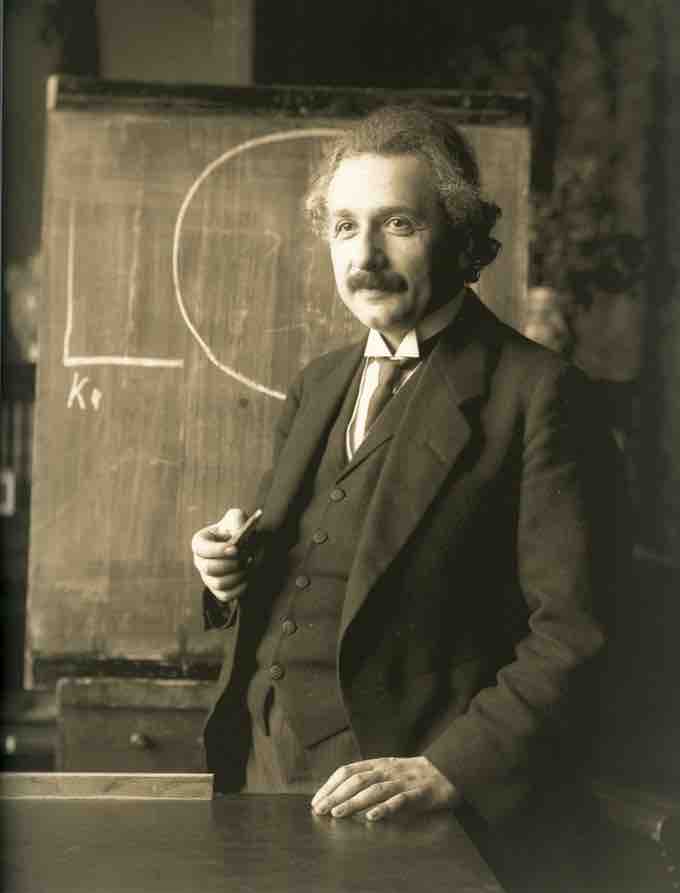In the late 19th century, the Newtonian mechanics was considered to be valid in all inertial frames of reference, which are moving at a constant relative velocity with respect to each other. (See our previous lesson on "Galilean-Newtonian Relativity. ") One issue, however, was that another well-established theory, the laws of electricity and magnetism represented by Maxwell's equations, was not "invariant" under Galilean transformation—meaning that Maxwell's equations don't maintain the same forms for different inertial frames. In his "Special Theory of Relativity," Einstein resolved the puzzle and broadened the scope of the invariance to extend the validity of all physical laws, including electromagnetic theory, to all inertial frames of reference.

Albert Einstein
Albert Einstein, a true pioneer of modern physics. His work on relativity, gavity, quantum mechanics, and statistical physics revolutionized physics.
Einstein's Postulates
With two deceptively simple postulates and a careful consideration of how measurements are made, Einstein produced the theory of special relativity.
1. The Principle of Relativity: The laws of physics are the same and can be stated in their simplest form in all inertial frames of reference.
This postulate relates to reference frames. It says that there is no preferred frame and, therefore, no absolute motion.
2. The Principle of Invariant Light Speed: The speed of light c is a constant, independent of the relative motion of the source and observer.
The laws of electricity and magnetism predict that light travels at c = 2.998×108 m/s in a vacuum, but they do not specify the frame of reference in which light has this speed. Physicists assumed that there exists a stationary medium for the propagation of light, which they called "luminiferous aether. " In 1887, Michelson and Morley attempted to detect the relative motion of the Earth through the stationary luminiferous aether, but their negative results implied the speed of light c is independent of the motion of the source relative to the observer. Einstein accepted the result of the experiment and incorporated it in his theory of relativity.
This postulate might sound easy to accept, but it is rather counterintuitive. Imagine that you can throw a baseball at a speed v (relative to you). If you are on a train moving at a speed V and throw a ball in the direction of the train's movement, the baseball will travel at a speed v+V for an observer stationary on the ground.
Now, instead of a baseball, let's say you have a laser pointer. You turn on the laser pointer while you are on a moving train. What would be the speed of light from the laser pointer for a stationary observer on the ground? Our intuition says that it should be c+V. However, Einstein says that it should be only c!